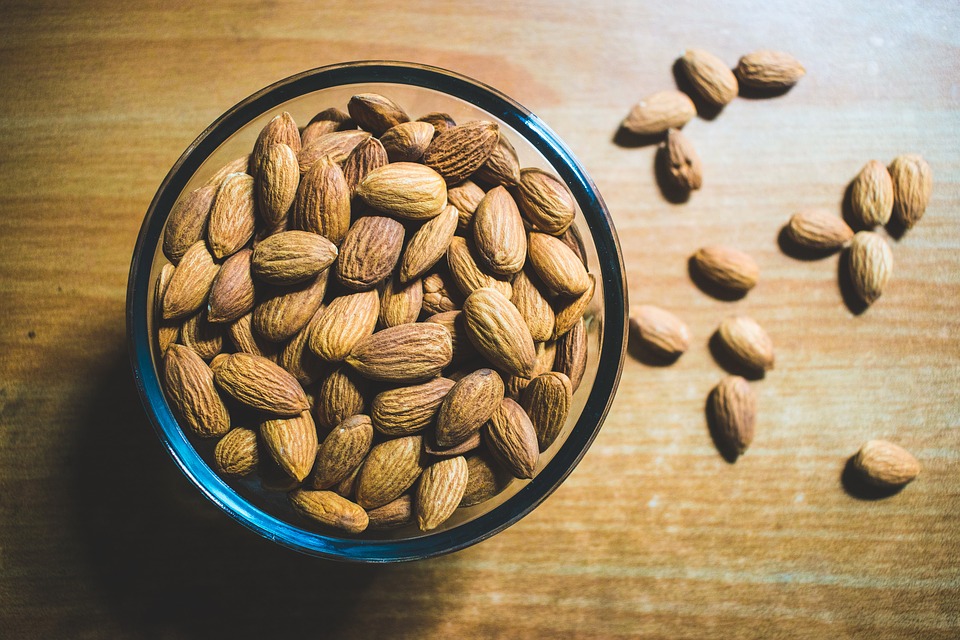
🌱🥤 Kick-Start Your Day with Vegan Keto Smoothie Power! 💥🌰
Are you following a vegan keto lifestyle and looking for a nutritious and delicious way to start your mornings? Look no further! Today, we’re sharing a collection of vegan keto smoothie recipes that will provide you with a nutrient-packed kick-start to your day. Get ready to explore the incredible combination of Brazil nuts and pumpkin seeds in these plant-powered smoothies. 🌰🎃💪
The Beauty of Vegan Keto
A vegan keto diet combines the health benefits of a plant-based lifestyle with the metabolic advantages of a ketogenic eating pattern. By focusing on low-carb, high-fat plant foods, you can achieve a state of ketosis while nourishing your body with nutrient-dense ingredients. Vegan keto offers an abundance of vegetables, healthy fats, and plant-based proteins, which support optimal health, weight management, and overall well-being. 🌱💪
Harnessing the Power of Brazil Nuts and Pumpkin Seeds
Brazil nuts and pumpkin seeds are incredible additions to your vegan keto smoothies. Brazil nuts are a rich source of selenium, a vital mineral that supports immune function and acts as a potent antioxidant. They also provide healthy fats, protein, and fiber to keep you satisfied. Additionally, Brazil nuts are known for their ability to promote healthy hair, skin, and nails due to their high content of selenium and other essential nutrients. Pumpkin seeds are packed with essential nutrients like magnesium, iron, and zinc. They contribute a pleasant crunch and a subtle nutty flavor to your smoothies, along with an array of health benefits. Pumpkin seeds are also a great source of plant-based omega-3 fatty acids, which support brain health and reduce inflammation in the body. By incorporating these superfoods into your morning routine, you’ll be fueling your body with plant-based powerhouses. 🌰🎃💥
Recipe Ideas:
- 🌰 Creamy Brazil Nut Bliss: Indulge in the creamy richness of a Brazil Nut Bliss smoothie. This recipe combines the velvety texture of soaked Brazil nuts with the subtle crunch of pumpkin seeds. To prepare this smoothie, blend together unsweetened coconut milk, a handful of nutrient-packed spinach, soaked Brazil nuts, pumpkin seeds, a scoop of your favorite plant-based protein powder, and a handful of ice cubes. The result is a decadent smoothie that provides a good source of healthy fats, protein, and fiber. The spinach adds an extra nutritional boost, delivering vitamins, minerals, and antioxidants. Adjust the ingredients to achieve your desired consistency and sweetness.
- 🎃 Pumpkin Spice Delight: Experience the cozy flavors of fall with a Pumpkin Spice Delight smoothie. This recipe combines the creaminess of soaked Brazil nuts with the earthy goodness of pumpkin seeds. To create this smoothie, blend together unsweetened almond milk, canned pumpkin puree, pumpkin seeds, your preferred plant-based protein powder, a teaspoon of pumpkin pie spice, and a drizzle of natural sweetener. Blend until smooth and creamy. This smoothie captures the flavors of autumn with the earthy pumpkin puree, warm spices, and the nutty crunch of pumpkin seeds. Adjust the sweetness level to your liking by adding more or less natural sweetener. Garnish with a sprinkle of cinnamon for an extra touch of warmth and aroma.
- 🌱 Green Power Boost: Boost your morning with a Green Power Boost smoothie that combines the power of leafy greens, Brazil nuts, and pumpkin seeds. In a blender, mix unsweetened almond milk, a handful of nutrient-rich kale or spinach, soaked Brazil nuts, pumpkin seeds, your preferred plant-based protein powder, a teaspoon of spirulina or matcha powder, and a touch of natural sweetener if desired. Blend until well combined. This vibrant green smoothie provides a potent dose of antioxidants, vitamins, and minerals from the leafy greens and spirulina or matcha. The Brazil nuts and pumpkin seeds add texture, healthy fats, and additional nutrients. Adjust the ingredients based on your taste preferences and desired thickness.
- 💥 Chocolate Nutty Heaven: Indulge in a Chocolate Nutty Heaven smoothie that satisfies your chocolate cravings while providing a nourishing blend of plant-based protein, healthy fats, and antioxidants. In a blender, combine unsweetened almond milk, a tablespoon of cacao powder, soaked Brazil nuts, pumpkin seeds, your preferred plant-based protein powder, a pinch of cinnamon, and a drizzle of natural sweetener. Blend until smooth and creamy. This smoothie is a delightful treat with a deep chocolate flavor. The Brazil nuts and pumpkin seeds add a nutty richness and a satisfying crunch. Adjust the sweetness and chocolate intensity to suit your taste buds. For an extra touch of luxury, top the smoothie with a sprinkle of cacao nibs or a dollop of dairy-free whipped cream.
- 🥥 Coconut-Berry Delight: Refresh your morning with a Coconut-Berry Delight smoothie that combines the tropical flavors of coconut with the vibrant sweetness of mixed berries. Blend together unsweetened coconut milk, a handful of mixed berries (fresh or frozen), soaked Brazil nuts, pumpkin seeds, your preferred plant-based protein powder, and a dash of vanilla extract. Blend until smooth and creamy. This invigorating smoothie is bursting with the flavors of coconut and mixed berries. The Brazil nuts and pumpkin seeds add creaminess, texture, and a nutritional boost. Adjust the sweetness by adding a natural sweetener if desired. Garnish with shredded coconut or a few extra berries for an extra pop of color.
Remember, these recipes are just starting points! Feel free to experiment with additional ingredients such as avocado, flax seeds, chia seeds, or your favorite plant-based proteins to create your own personalized vegan keto smoothie masterpieces. Let your creativity flourish, and enjoy the abundance of flavors and nutrients on your vegan keto journey! 🌱🥤💥
We would love to see your vegan keto smoothie creations. Share your photos, experiences, and recipe adaptations with us on social media by tagging @Masala.Monk and using the hashtag #MasalaMonk. Let’s inspire and support each other in our vegan keto lifestyle! 📸✨
Blog Tags: Vegan keto, smoothie recipes, Brazil nuts, pumpkin seeds, breakfast, plant-based protein, healthy fats, nutrient-dense, experimentation, superfoods













